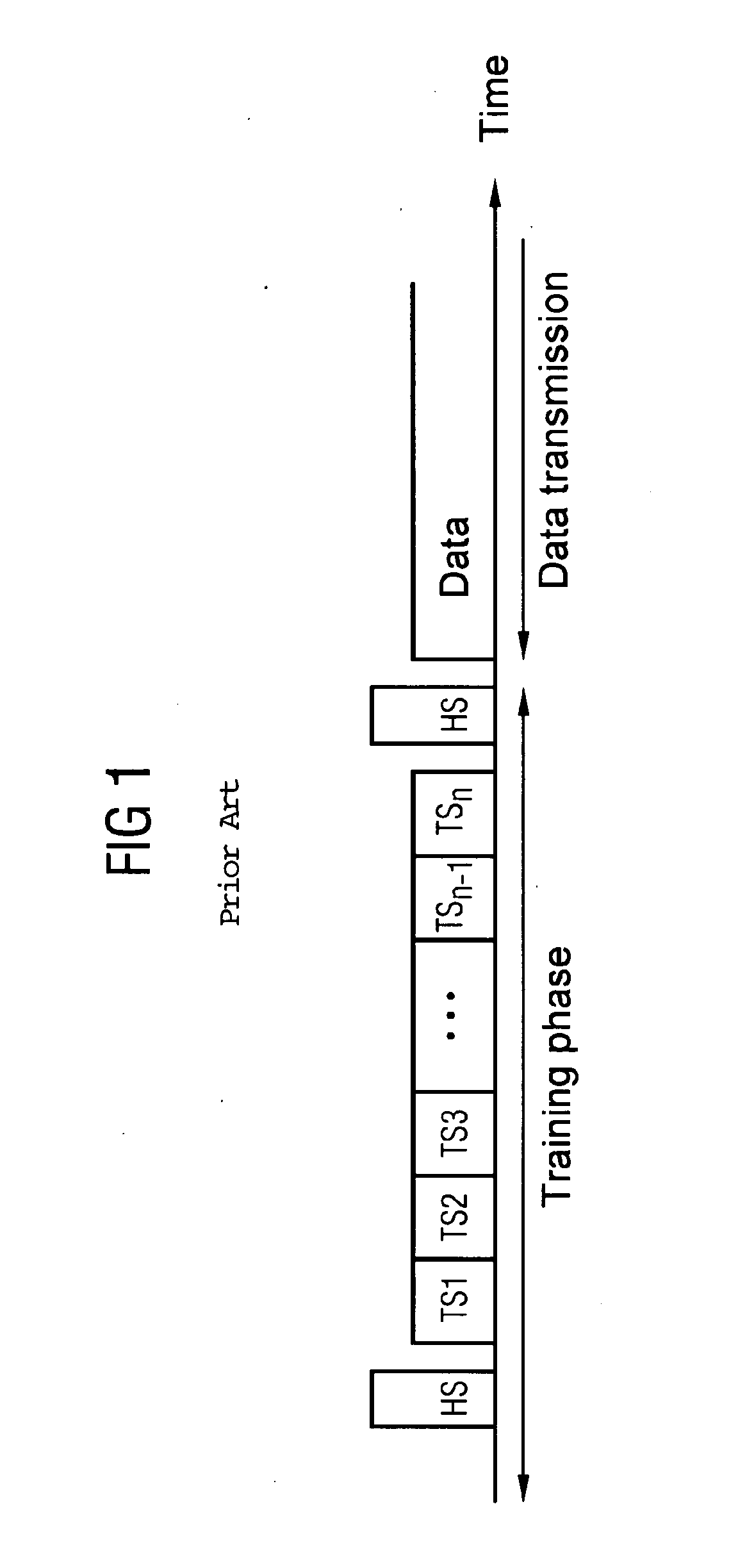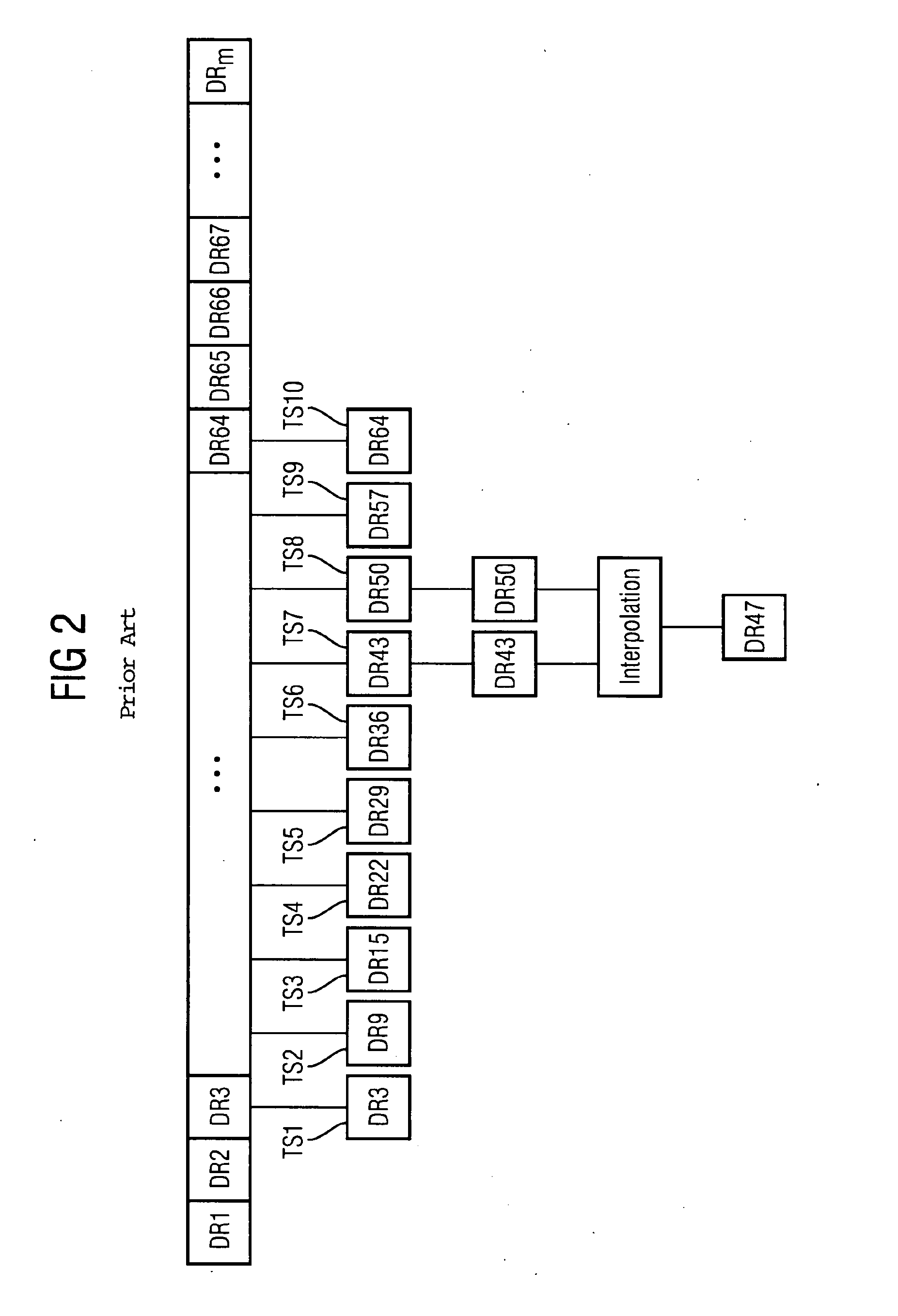Determining an Optimal Data Transfer Rate Via a Transfer Medium
a technology transfer medium, which is applied in the direction of data conversion, power management, transmission, etc., can solve the problems of non-optimal utilization of transmission link, all possible data transfer rate cannot be tested, etc., and achieve the optimization of data transfer rate to be further improved, precise determination of optimal data transfer rate, and the effect of improving the accuracy of determining the optimal data transfer rate for transmission
- Summary
- Abstract
- Description
- Claims
- Application Information
AI Technical Summary
Benefits of technology
Problems solved by technology
Method used
Image
Examples
Embodiment Construction
[0023]FIG. 1 shows a schematic diagram of the known timing sequence during connection setup in a telecommunication arrangement to be arranged in accordance with the prior art, which in this exemplary embodiment is designed in accordance with the SHDSL method. This example involves comparing the quality of the test sequence when different baud rates are used.
[0024]During the test phase, for determining the optimal baud rate on connection setup n predetermined test sequences (TS1, . . . , TSn) with different, increasing baud rates in each case are generally transmitted by means of a handshake method from a communication device to a further communication device, with the quality of the received test sequences being recorded and determined. Handshake method means in general that he parameters for the data transfer are negotiated and readiness to send or readiness to receive is indicated between the two communication devices using what are referred to as mutual handshake signals (HS).
[00...
PUM
 Login to View More
Login to View More Abstract
Description
Claims
Application Information
 Login to View More
Login to View More - R&D
- Intellectual Property
- Life Sciences
- Materials
- Tech Scout
- Unparalleled Data Quality
- Higher Quality Content
- 60% Fewer Hallucinations
Browse by: Latest US Patents, China's latest patents, Technical Efficacy Thesaurus, Application Domain, Technology Topic, Popular Technical Reports.
© 2025 PatSnap. All rights reserved.Legal|Privacy policy|Modern Slavery Act Transparency Statement|Sitemap|About US| Contact US: help@patsnap.com



